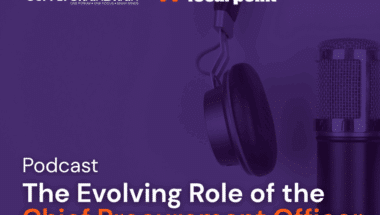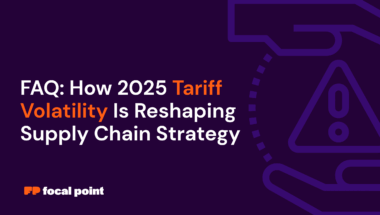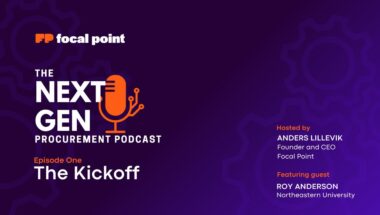I recently began publishing a five-part series on how modern businesses can better organize and manage their procurement processes. In my first piece, I discussed the changing role of the chief procurement officer, while my second article covered the various digital tools being used to streamline corporate procurement. But while digitalization of individual procurement processes has gained widespread adoption, today’s organizations still struggle to optimize this crucial business function. This article will uncover some of the lingering headaches surrounding digital transformation in procurement, while providing actionable insights to achieve true optimization.
The stakes are high for effective digital transformation. Streamlining procurement through automated processes can dramatically reduce expenses in a business area traditionally viewed as a cost center. But while the rewards of digitalization are clear, the majority of initiatives still fail to deliver the desired result. Research from BCG found that 70% of digital transformations fail to reach their stated goals — demonstrating a profound, costly disconnect between vision and execution.
Defining technology-enabled procurement
To understand whether digitalization in procurement is succeeding or failing, we need to first define what it means to be “technology enabled.” There doesn’t seem to be consistent agreement on this question among procurement specialists. Is an organization technology enabled if it has digitalized specific processes such as contract signature management? If a business automates its most common tasks but leaves those that require less frequent attention to be completed manually, can it truly be called technology enabled? This gray area is actually one of the largest contributors to blind spots and lack of visibility in the procurement process.
A true understanding of technology-enabled procurement requires business leaders to consider the process from end to end. At how many points in that process are employees having to perform calculations themselves or organize operations over email? Do those manual moments interrupt the flow that is otherwise achieved through automation? Why is that happening? Answering these questions allows procurement officers and other business leaders to gain a complete picture of how their teams are working and what roadblocks they’re finding during their day-to-day work.
The swivel chair problem in Procurement
When we look around at the procurement landscape today, most companies have introduced some measure of digitalization to their operations. In particular, many of the tasks which are performed on a regular basis have been automated, saving untold time and resources when compared with previous approaches. However, processes that are not done particularly frequently are still completed primarily using manual tools like email or spreadsheets. In some cases, individual tasks like ESG compliance or managing supplier diversity have automated solutions, but these are each housed on different systems. This fragmentation leads to frequent code-switching, with procurement managers having to log in and out of multiple systems over the course of the day.
While it may look like we’ve made a lot of progress as an industry toward digitalization, the reality is that we’ve only achieved what I refer to as “swivel chair integration.” As you gather information about a certain provider, you have to bounce between different menus and systems, swiveling from one place to another until you’ve finally collected everything you need in one place. Over time, this manner of working leads to blind spots and simple mistakes. To use another metaphor, all of these separate automations are akin to looking at individual trees and never seeing the forest itself.
Integrated digitalization in Procurement
In order to achieve a complete digital transformation in procurement, we need to move past swivel chair integration and create a truly integrated system without blind spots. With Focal Point, our goal is to combine all of these disparate processes into a single API, either by plugging in new processes as they emerge or by building new tools and functionalities ourselves. An open, modular approach to procurement offers a future-proof solution: even if customers have a system that works really well for a specific task, they can integrate it into the overall API without having to take a long-term swivel chair approach.
Think about some of the most popular digital experiences consumers use today. When a consumer buys something on Amazon, every step of that process takes place on the same platform: order, payment, shipment tracking, customer support, returns. Even when ordering from a third-party seller on Amazon Marketplace, the end user can handle every step of the transaction without having to leave the platform.
This highly integrated user experience should be the ultimate goal for procurement technology, connecting every dot in the process to deliver a comprehensive picture for CPOs and procurement managers. We aim to deliver this experience with Focal Point. In my next article, I’ll take a look at how companies are working towards this end goal in the real world, and what benefits they’re enjoying as a result.



